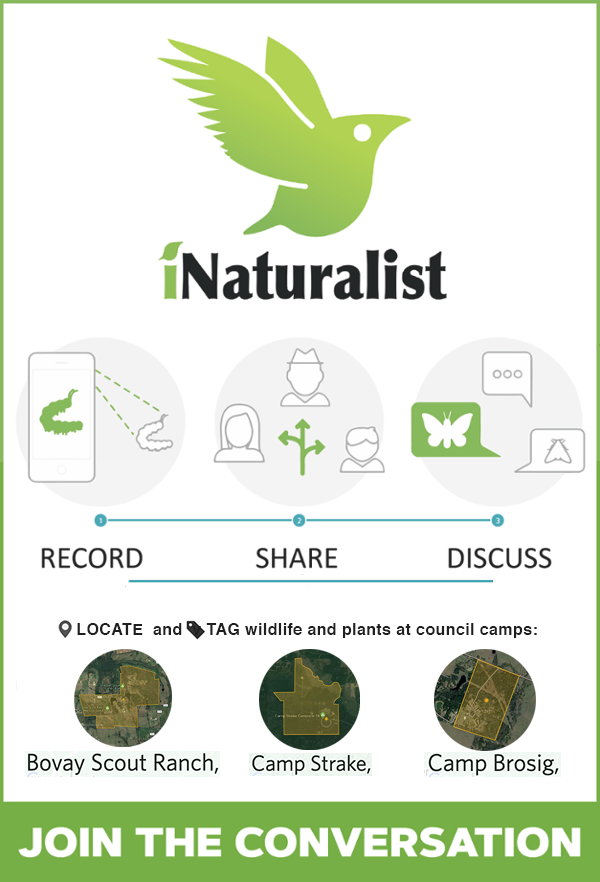Native Plants
Texas has over 5,000 species of native plants. Native wildflowers, grasses, shrubs and trees do much more than add beauty to the landscape. Native plants:
| |
• Low maintenance once established
• Conserve water
• Reduce mowing costs
• Survive temperature extremes
|
• Protect soils
• Clean our air
• Mitigate flooding
• Help the climate
|
• Reduce temperatures in urban areas
• Reduced need for fertilizer and pesticides
• Create a healthier place for you, your family and community
• Provide habitat for birds, butterflies and other wildlife
• Learn how you can help.
|
iNaturalist
 iNaturalist is a free app to help identify plants and animals. Get connected with a community of over a million scientists and naturalists who can help you learn more about nature! What’s more, by recording and sharing your observations, you’ll create research-quality data for scientists working to better understand and protect nature. Download the app on your phone or visit iNaturalist.org.
iNaturalist is a free app to help identify plants and animals. Get connected with a community of over a million scientists and naturalists who can help you learn more about nature! What’s more, by recording and sharing your observations, you’ll create research-quality data for scientists working to better understand and protect nature. Download the app on your phone or visit iNaturalist.org.
Identify and tag observations of plants and animals seen at Camp Strake, Bovay Scout Ranch, and Camp Brosig.